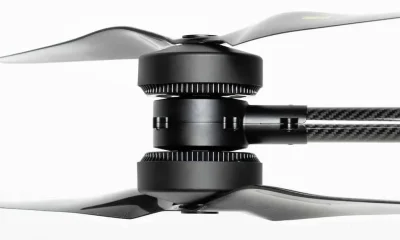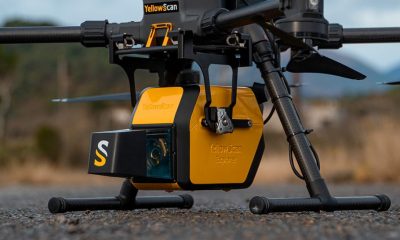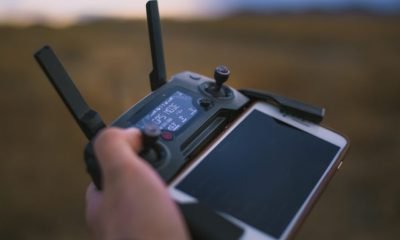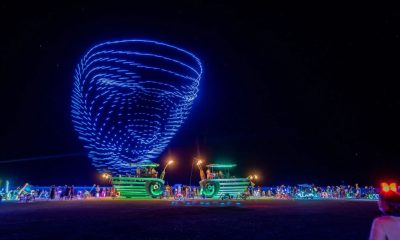Drone Technology
Flight Control Systems in Drones
Table Of Contents

Drone Flight Control Systems- What Are They & how Does it Work?
What allows drones to hover with precision, change direction on a dime, or maintain stability against gusty winds? The answer lies in their sophisticated flight control systems. These systems act as the brains of a drone, seamlessly combining advanced technology to create smooth and responsive flight. Whether used for recreational purposes, professional photography, or industrial applications, drones depend heavily on their flight control systems to deliver accurate performance and reliability.
At its core, a drone’s flight control system integrates sensors, processors, and motors into a unified network that interprets pilot commands and environmental factors in real time. This orchestration not only enables the drone to execute complex maneuvers but also ensures it remains steady and safe during operation. In this article, we will delve deeper into the components, functionality, and advancements shaping these systems, offering you a clear understanding of what keeps drones soaring with precision.
With drone technology advancing at an unprecedented pace, understanding the intricacies of flight control systems is essential for both enthusiasts and professionals. These systems are more than just technical marvels; they represent the confluence of physics, engineering, and computer science, working in harmony to transform human imagination into reality.
What Makes Flight Control Systems Important
Flight control systems are the backbone of every drone’s operation. They ensure that the drone remains stable, responsive, and capable of executing complex tasks under a variety of conditions. Without these systems, even the most advanced drone would struggle to perform basic functions such as maintaining altitude, navigating obstacles, or following a predetermined flight path.

The importance of flight control systems can be summarized in several key areas:
- Stability and Safety: These systems process real-time data from sensors to counteract environmental disturbances, such as wind or sudden changes in altitude, ensuring a stable and safe flight experience.
- Precision in Execution: Whether it’s capturing stunning aerial footage or conducting an industrial inspection, flight control systems provide the precision necessary to perform these tasks with accuracy and efficiency.
- User Accessibility: Modern flight control systems simplify drone operation, making advanced flight capabilities accessible even to beginners. Features like auto-hover, return-to-home, and waypoint navigation rely on the seamless integration of these systems.
- Autonomous Capabilities: For drones involved in delivery services, search and rescue missions, or agricultural monitoring, flight control systems enable autonomous flight by integrating GPS, AI, and advanced algorithms.
- Versatility Across Applications: From recreational use to professional and industrial sectors, these systems ensure that drones can adapt to diverse environments and requirements.
The Role of Flight Control Systems
Flight control systems form the foundation of drone functionality, ensuring stability, responsiveness, and adaptability. They process real-time data from various sensors, counteracting environmental disturbances like wind or sudden altitude changes. These systems provide the precision necessary for tasks such as aerial photography or industrial inspections, enabling drones to deliver accurate and efficient results.
Key advantages of flight control systems include:
- Stability and Safety: Counteract environmental factors for smooth, reliable operation.
- Precision Execution: Enable tasks requiring high accuracy, such as filming or inspections.
- Ease of Use: Simplify operation through features like auto-hover and return-to-home.
- Autonomy: Support advanced applications with GPS, AI, and algorithms.
- Versatility: Adapt to diverse environments and use cases.
Whether used recreationally or professionally, flight control systems ensure that drones remain versatile and reliable across a wide range of applications.
Core Components That Drive Performance
The effectiveness of a drone’s flight control system lies in its carefully orchestrated components. At the heart of the system is the flight controller, which processes data from sensors and pilot inputs to issue precise commands to the motors. Supporting the flight controller are:
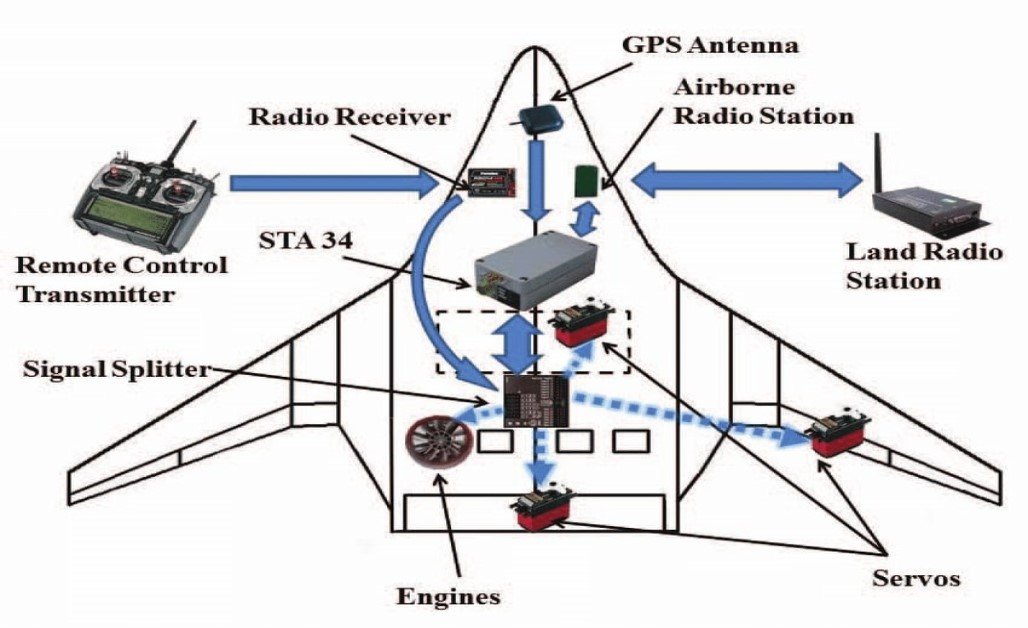
- Gyroscopes and Accelerometers: These sensors measure angular velocity, movement, and tilt, helping the drone maintain balance and respond to directional changes.
- GPS Modules: Provide navigation accuracy and enable features like waypoint mapping and return-to-home.
- Barometers and Magnetometers: Assist with altitude stabilization and directional awareness.
- Electronic Speed Controllers (ESCs): Synchronize motor operation for stable and responsive flight.
- Motors and Propellers: Execute commands from the flight controller, generating lift and thrust.
- Inertial Measurement Units (IMUs): Combine gyroscope and accelerometer data for real-time adjustments.
- Power Management Systems: Monitor battery levels and ensure efficient power usage.
Together, these components create a seamless network that allows drones to operate effectively, even in challenging environments.
How Flight Control Systems Operate
Flight control systems translate pilot inputs into drone movements, creating a smooth and responsive flight experience. When hovering, the flight controller adjusts motor speeds in real time to maintain altitude, using data from barometers and gyroscopes to ensure stability. For directional movement, it redistributes power to tilt the drone, enabling precise transitions. Sudden environmental changes, such as gusts of wind, are instantly compensated for by the flight controller, which adjusts motor output to maintain balance.

For autonomous drones, these systems take on even more responsibilities, such as navigating obstacles, executing pre-programmed missions, and activating safety features like return-to-home. These operations highlight the collaboration between sensors, processors, and motors, showcasing the sophistication of modern flight control systems.
Types of Flight Control Systems
Different drones use different types of flight control systems to meet varying needs:
- Manual Systems: Rely entirely on pilot skill, providing complete control but requiring expertise.
- Semi-Automatic Systems: Combine user input with assistance features like altitude hold and GPS stabilization, making them ideal for intermediate users.
- Fully Automatic Systems: Integrate advanced sensors and AI to enable autonomous operations, common in professional and industrial drones.
- Hybrid Systems: Offer the flexibility to switch between manual and autonomous modes, suitable for diverse tasks.
These categories ensure that users at every skill level and use case can find a system that meets their requirements.
Modern Innovations in Flight Control
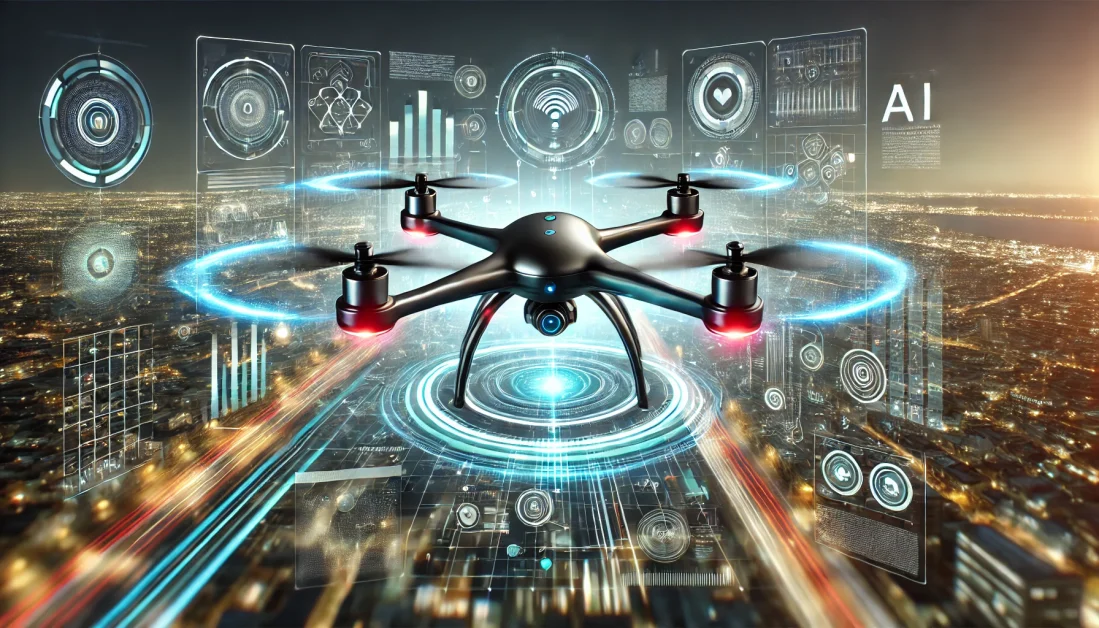
Flight controllers today incorporate cutting-edge features to enhance performance and safety. Many systems allow users to customize settings for specific needs, such as racing or photography. Built-in GPS modules support navigation and safety protocols, while stabilization modes like altitude hold and angle mode make operation accessible to beginners. Advanced failsafe mechanisms ensure the drone can land safely or return home during emergencies, such as signal loss or low battery.
Additionally, AI-powered obstacle detection and avoidance have become standard in high-end systems, enabling drones to navigate complex environments safely. Telemetry integration provides pilots with real-time data like altitude, speed, and battery levels, offering valuable insights during operation.
The Role of Software in Flight Control
Software acts as the bridge between hardware and pilot commands, processing data to ensure real-time responsiveness. It enables autonomy through algorithms that handle tasks such as automated navigation and obstacle avoidance. Customizable settings allow users to adapt flight behavior to their specific needs, while regular software updates keep systems current with the latest advancements.

Beyond operation, software plays a crucial role in safety. Anomalies such as motor failure or environmental hazards trigger error-handling protocols, preventing accidents. With its ability to adapt and evolve, software is as integral to flight control systems as the hardware it manages.
Here are three notable providers of drone flight control software:
- Auterion: Auterion offers an open-source drone operating system that integrates various drone hardware and software components, enabling seamless operation and enhanced interoperability. Their platform is designed to support both commercial and military drone applications, providing standardized software solutions for diverse operational needs.
- FlytBase: FlytBase provides an enterprise drone autonomy software platform that facilitates the automation of drone operations. Their technology enables integration between drones and software systems, allowing for automated data extraction and processing, which is beneficial for applications such as asset monitoring and industrial inspections.
- Dronelink: Dronelink offers a versatile flight control software compatible with DJI and Autel drones. It supports fully automated missions, semi-automated workflows, and manual flight tools, catering to various use cases across industries. Features include mapping, waypoints, orbits, vertical mapping, facades, inspections, and panoramic captures, accessible via web, iOS, Android, and remote controllers with screens.
These providers offer comprehensive solutions to enhance drone flight control, catering to a wide range of applications from recreational use to complex industrial operations.
Applications of Advanced Flight Control Systems
Advanced flight control systems have revolutionized drone use across industries. In aerial photography, they enable stable, high-quality shots by providing precision control and automated features. Industrial inspections benefit from drones’ ability to navigate hazardous environments safely and efficiently. In agriculture, drones with autonomous flight capabilities optimize tasks such as crop monitoring and pesticide application.
Flight Control Applications
- Aerial Photography and Cinematography: High-precision flight control allows drones to capture stunning aerial footage and photos with unmatched stability. Features like GPS hold, automated flight paths, and obstacle avoidance make it easier for creators to focus on framing the perfect shot without worrying about manual adjustments.
- Industrial Inspections: Drones equipped with advanced flight control systems are used for inspecting infrastructure such as bridges, power lines, and wind turbines. Their ability to maintain stable flight in challenging environments ensures accurate data collection and reduces the need for human intervention in hazardous locations.
- Agriculture: Precision farming benefits greatly from drones with advanced flight control. These drones can autonomously map fields, monitor crop health, and even apply fertilizers or pesticides with precision, optimizing resource use and improving yields.
- Delivery Services: Companies are leveraging drones for last-mile delivery, transporting packages to customers with speed and efficiency. Flight control systems enable autonomous navigation, obstacle avoidance, and precise landings, ensuring reliable service.
- Search and Rescue: In emergency situations, drones equipped with advanced flight controls can navigate through difficult terrain to locate missing persons or deliver critical supplies. Thermal imaging and autonomous navigation are often integrated for enhanced effectiveness.
- Environmental Monitoring: Drones are being used to track wildlife, monitor deforestation, and assess environmental changes. Advanced flight control systems ensure stability and precision during long missions in remote areas.
- Racing and Competitions: In drone racing, advanced flight control systems provide high responsiveness and agility, allowing pilots to perform sharp turns and maintain high speeds through complex courses.
- Law Enforcement and Security: Police and security agencies use drones for surveillance, crowd monitoring, and reconnaissance. Flight control systems ensure steady and reliable operation during critical missions.
- Scientific Research: Drones are aiding researchers in collecting data from hard-to-reach areas, such as volcanoes, glaciers, and deep forests. Advanced systems allow for precise measurements and prolonged flight times.
Looking Ahead: Future Trends
The future of drone flight control promises transformative innovations. Artificial intelligence and machine learning will allow drones to adapt dynamically to their surroundings, improving navigation and obstacle avoidance. Swarm technology will enable coordinated operations among multiple drones, unlocking applications in disaster response and agriculture. Edge computing, extended battery life, and 5G connectivity will enhance performance and broaden operational possibilities.
Sustainability will also play a role, with eco-friendly materials and energy-efficient technologies becoming standard. As flight control systems continue to evolve, their applications will expand, redefining how drones are used across industries.

Conclusion
Flight control systems are the cornerstone of drone technology, enabling these machines to perform a wide range of tasks with precision and reliability. By integrating sensors, processors, and motors into cohesive networks, these systems exemplify the seamless collaboration of engineering, physics, and computing. As technology advances, flight control systems will unlock new capabilities, making drones even more indispensable in our lives and industries.
To Learn more about acronyms used in this article visit our Drones Acronym Page.


